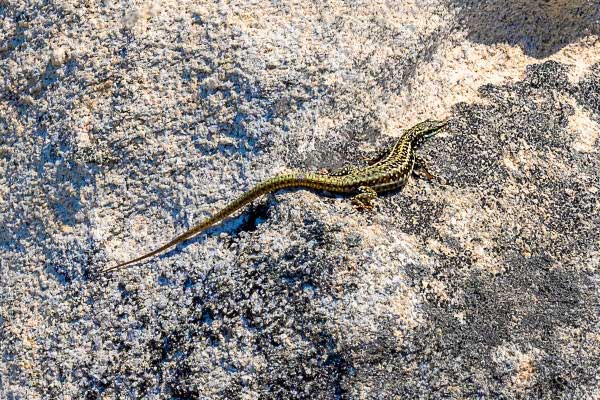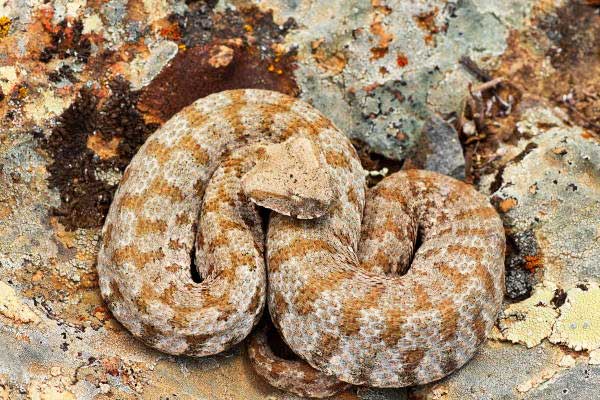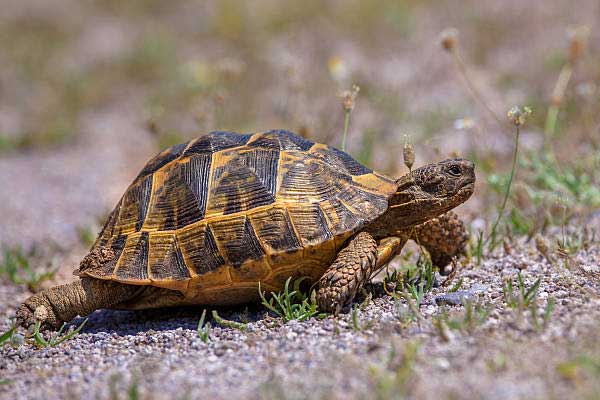Reptiles in Greece, Lizards, Snakes and Tortoises

By understanding their habitats, behavior, and cultural significance, we can better appreciate these remarkable animals that have coexisted with humans for centuries. Whether you’re an avid nature enthusiast or simply curious about these cold-blooded inhabitants of Greece, there is always something new to learn and explore when it comes to reptiles in this ancient land.
Greece is home to a diverse range of reptiles, adding an element of intrigue to its natural landscape. One common reptile found in Greece is the Balkan Wall Lizard, known for its vibrant colors and agile movements across rocky terrains. The Greek Tortoise, with its distinctive shell patterns, can often be spotted basking in the sun during warm days.
The Spur-thighed Tortoise is another iconic species that roams the Mediterranean region, including parts of Greece. Snake enthusiasts may encounter the Montpellier Snake slithering through grassy areas or olive groves. Keep an eye out for the Leopard Snake as well – their striking patterns make them quite a sight!
Don’t forget about the elusive Aegean Snake-Eyed Lizard and the Dalmatian Algyroides; their presence adds mystery to Greece’s reptilian population. Explore different regions of this beautiful country to catch glimpses of these fascinating creatures in their natural habitats!
Habitat and Distribution of Greek Reptiles
Greece, with its diverse landscape of mountains, forests, and coastlines, provides an ideal habitat for a variety of reptiles. From the rocky slopes of the mainland to the sun-drenched islands scattered throughout the Aegean Sea, these cold-blooded creatures have found their niche in different ecosystems across the country.
The warm Mediterranean climate of Greece offers favorable conditions for reptiles like snakes, lizards, and turtles to thrive. They can be spotted basking in the sun on dry stone walls or darting through shrubs in search of prey. Some species are endemic to specific regions while others roam more widely across the country.
Whether you’re exploring ancient ruins or hiking through rugged terrain, keep an eye out for these fascinating reptilian inhabitants. Remember to respect their natural habitats and observe them from a safe distance to ensure both your safety and theirs.
Unique Features and Adaptations of Greek Reptiles
Let’s dive into the fascinating world of Greek reptiles and explore their unique features and adaptations. One remarkable aspect of these creatures is their ability to blend seamlessly into their surroundings, utilizing camouflage to evade predators or ambush prey. Some species have developed specialized skin textures that help regulate body temperature in the diverse Greek landscapes.
Greek reptiles also showcase a variety of defense mechanisms, from mimicry to venomous bites, ensuring their survival in challenging environments. Their diverse diets range from insects to small mammals, showcasing impressive hunting strategies tailored to each species’ needs.
Adaptations like hibernation during winter months allow Greek reptiles to conserve energy when resources are scarce. Additionally, many species possess remarkable regenerative abilities, enabling them to regenerate lost limbs or tails over time.
The unique features and adaptations displayed by Greek reptiles highlight the incredible diversity and resilience of these captivating creatures in the Mediterranean region.
Threats and Conservation Efforts
The reptiles in Greece face various threats to their survival, primarily due to habitat destruction and fragmentation. Human activities like urbanization, agriculture expansion, and deforestation are encroaching on their natural habitats, leading to loss of cover and food sources.
Climate change also poses a significant threat as it alters temperature patterns and affects the reproductive success of many reptile species. Additionally, illegal collection for the pet trade further exacerbates population declines among some vulnerable species.
To combat these threats, conservation efforts are being implemented across Greece. Initiatives focus on habitat restoration, creating protected areas, and raising awareness about the importance of reptiles in ecosystems.
Conservation organizations work tirelessly to monitor populations, conduct research on endangered species, and engage local communities in conservation practices. By promoting sustainable land use practices and enforcing laws against illegal wildlife trade, we can help protect Greek reptiles for future generations to admire and appreciate.
Interactions with Humans
Throughout history, snakes have been both feared and revered, often representing transformation and healing in Greek mythology. The serpent is associated with Asclepius, the god of medicine, symbolizing renewal and regeneration.
In ancient times, snakes were believed to possess divine powers and were worshipped in temples dedicated to healing. Even today, some Greeks view encountering a snake as a sign of good luck or protection. On the other hand, there are superstitions surrounding lizards being seen as omens of bad luck.
The cultural significance of reptiles extends beyond symbolism; they also feature prominently in art and literature. From pottery depicting snakes to ancient texts referencing mythical creatures like the Hydra, Greek culture is rich with references to reptilian beings.
Tips for Observing and Photographing Greek Reptiles
When exploring the diverse landscape of Greece, keep your eyes peeled for the fascinating reptiles that call this country home. To increase your chances of spotting these elusive creatures, venture out during the early morning or late afternoon when they are most active.
To observe them undisturbed, move slowly and quietly in their natural habitats like rocky areas or olive groves. Remember to respect their space and never disturb their environment.
For capturing stunning photos of Greek reptiles, use a telephoto lens to maintain a safe distance while still getting up close shots. Pay attention to lighting conditions and angles to highlight their unique features.
Practice patience as observing and photographing these creatures can require time and dedication. With persistence and a keen eye, you’ll be rewarded with unforgettable encounters with Greece’s mesmerizing reptilian residents.
Types of Snakes Lizards and Tortoises
Snakes
Greece is home to several snake species, ranging from harmless to potentially dangerous:
Horned Viper (Vipera ammodytes): One of the most venomous snakes in Europe, easily recognizable by the horn-like structure on its snout. Its bite can be dangerous without prompt medical treatment.
European Adder (Vipera berus): A venomous species found in northern Greece, distinguishable by the zigzag pattern down its back. Its venom is potent, but bites are rarely fatal.
Cat Snake (Telescopus fallax): A mildly venomous snake that preys on small mammals and birds. It’s nocturnal and less commonly encountered by humans.
Grass Snake (Natrix natrix): A non-venomous snake that is often found near water. It feeds on amphibians and is harmless to humans.
Dice Snake (Natrix tessellata): Another non-venomous species that lives in aquatic environments and feeds on fish and amphibians.
European Rat Snake (Zamenis situla): A non-venomous snake that primarily feeds on rodents, helping control their populations.
Lizards
Lizards are well-represented in Greece, with several species thriving across different habitats:
Balkan Green Lizard (Lacerta trilineata): A large, common lizard that can be found in open areas and forests.
Common Wall Lizard (Podarcis muralis): Often seen on walls and rocks, this small lizard is adapted to urban environments as well as natural ones.
European Legless Lizard (Ophisaurus apodus): Despite its appearance, it’s not a snake but a lizard without legs, which inhabits dry and sandy areas.

Tortoises and Turtles
Tortoises and sea turtles also feature prominently in Greece’s reptilian fauna:
Hermann’s Tortoise (Testudo hermanni): A land-dwelling tortoise found in wooded and grassland areas, recognized by its domed shell.
Spur-thighed Tortoise (Testudo graeca): Another terrestrial tortoise species, common in Greece, known for the spurs on its thighs.
Loggerhead Sea Turtle (Caretta caretta): This marine turtle nests on sandy beaches in Greece, particularly in Zakynthos, which is one of the most important nesting sites in the Mediterranean.
Green Turtle (Chelonia mydas): Less common than the loggerhead, the green turtle occasionally nests on Greek beaches and is mostly seen in the sea.


